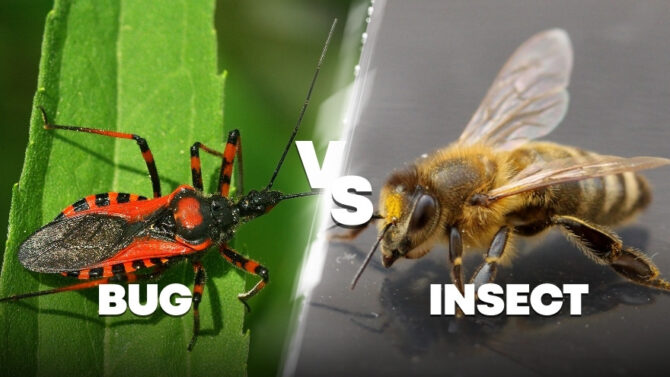Overwhelming human activities bug us, but many bugs do not. Why?
Food chains depend on these tiny organisms, as many higher animal species eat bugs.
Some control pests and pollinate plants, while others may even be worth a cuddle, adorning themselves in beautiful colors and shapes.
One that readily comes to mind is the majestic ladybug; still, jewel beetles and the twilight magician, the firefly, are some awe-inspiring creepy species.
Sadly, not all bugs befriend us; there are blood-sucking bugs that can plague humans and animals and transmit illnesses.
Mosquitoes, lice, flies, and true bugs fall under this unfriendly group, living on human or host animal parasites.
We will now consider ten blood-sucking insects you should know, facts about these insects, and tips on how to control them.
The Blood-Sucking Bugs That Want To Suck Your Blood
1. Asian Tiger Mosquito
Scientific Name: Aedes albopictus
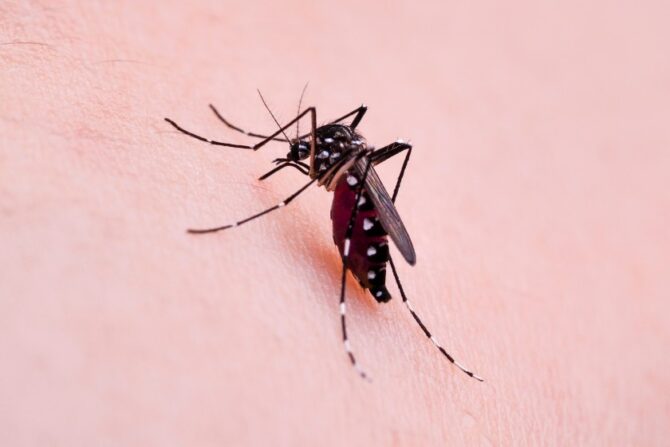
White bands on its legs and body are the Asian tiger mosquito’s most distinctive feature.
This stripped appearance bears a resemblance to a tiger’s; however, such artistic similarity does little to identify the mosquito as a friendly bug.
The Asian tiger mosquito is a daytime bloodsucker that frequents shady areas.
It is infamously capable of hosting the Zika virus and is deemed a potential insect for Zika transmission among humans.1 2
The Asian tiger mosquito primarily breeds in water-retentive artificial containers and tree holes.
Still, it can adapt to several conditions and climates, supporting its survival in new areas during goods transportation and international travel to become one of the world’s worst invasive species.3
Originally inhabiting Southeast Asia, the Asian tiger mosquito has spread its domain across the Caribbean, Africa, Europe, and the Americas.
2. Stable Fly
Scientific Name: Stomoxys calcitrans
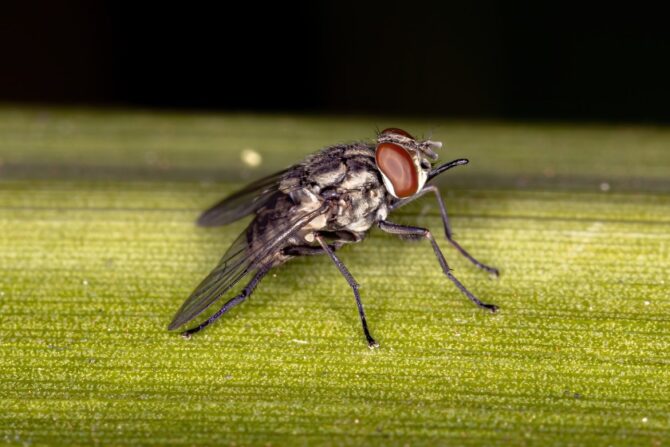
Despite being a housefly look-alike, the stable fly is a non-friendly species notorious for sucking human and animal blood.
Worse still, the fly originally from the Eurasian region is now a worldwide unwelcome occupant.
Stable flies have mouthparts modified for biting, unlike the housefly’s sponge-adapted mouthparts.
Another distinctive feature is their appearance, being lighter in color than the housefly, with round dark spots on the upper abdomen.
It will be best to avoid where cattle are kept known to host stable flies in their abundance. Why?
These flies are linked with carrying the causative agent of anthrax and could likely transmit African horse sickness (AHS), equine infectious anemia, and fowlpox, among other diseases.4
Plagued cows may have blood disorders and produce lower quantities of milk.
3. Head Louse
Scientific Name: Pediculus humanus capitis
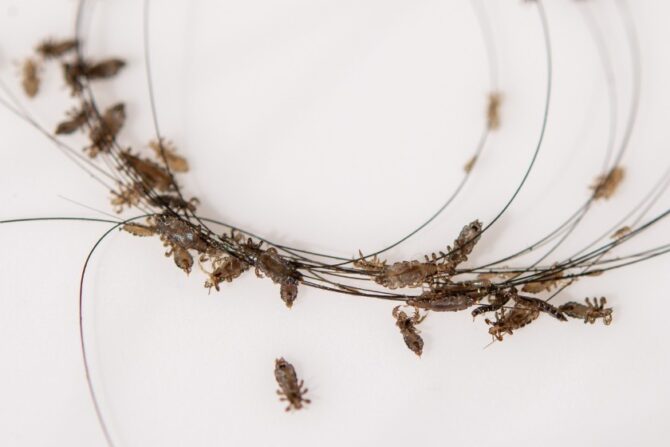
While the previous two bugs we considered attack humans and animals, the head louse attacks humans.
These wingless insects have sucking mouthparts between one and two millimeters long.
These lice spend their entire existence on the human scalp, feeding exclusively on the host’s blood.
They lay their eggs on the hair, especially on the back of the head and behind the ears. Fortunately, the head louse is not a disease transmitter.
However, many, including an estimated two-thirds of British children, will be infected with head lice during school years and suffer secondary infections that result from scratching.5
4. Black Salt Marsh Mosquito
Scientific Name: Aedes taeniorhynchus

The Florida districts spending US$1.5 million on insect control as far back as 1951 shows how terrible the black salt marsh mosquito is.6
The black salt marsh mosquito has banded legs like the Asian tiger mosquito (Aedes albopictus), but its most distinctive feature is a single white band that appears at the center of the proboscis.
Black salt marsh mosquitoes inhabit coastal areas, including mangroves and salt marshes across North and South America, even though southern regions record higher populations.
Unlike the average mosquito, the black salt marsh mosquito is notorious for speedy flight and starting blood extraction instantly.
While that sounds scary, this mosquito is charged with carrying the West Nile Virus, iridescent mosquito virus, Venezuelan equine encephalomyelitis virus, and yellow fever virus, with experimental studies on the probability of transmitting other diseases.
5. Horseflies
Scientific Name: Tabanus spp.
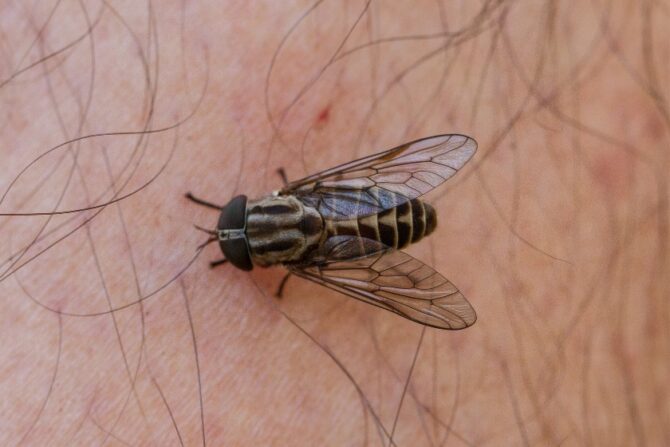
Horse flies are a group of large, heavy-bodied flies whose females bite other species, including humans, to suck their blood.
These female horseflies have a stout-stabbing mouthpart designed to pierce, and a spongelike part used to suck blood.
Horseflies are guilty of transmitting blood-borne diseases in humans and animals, including equine infectious anemia virus (in horses), Loa loa (in humans), anthrax (in cattle and sheep), Tularemia or rabbit fever (in humans), and some trypanosomes.
While the average mosquito bite may cause itching alongside malaria, horsefly bites are painful to humans with other symptoms, including puffy or swollen skin parts, rash, dizziness, weakness, and wheezing accompanying the pain.
Some individuals may even experience more serious conditions due to an allergic reaction.
Infested individuals can suffer reduced growth rates and low milk production in other species like cattle.
Sadly, horseflies are not common in specific areas of geographical zones but are found worldwide, albeit in polar regions.
One can identify these flies by their clear, gray, or brown-shaded, sometimes patterned membranous forewings.
6. Pubic Louse
Scientific Name: Pthirus pubis

Like the head louse, the pubic or crab louse makes humans their lifetime host, living in their pubic regions.
The pubic louse’s wide oval body and large grasping claws are its most distinctive identifying features.
However, they can occupy other body parts where they find the comfort of coarse hair, including the chest, armpits, and eyebrows.
Pubic lice do not only make humans their hosts but make their blood their only meal.
While they do not spread any blood-borne diseases, these lice plague their hosts with intense itching due to hypersensitivity to their saliva and secondary bacterial infections from scratching.
7. Deerflies
Scientific Name: Chrysops spp.
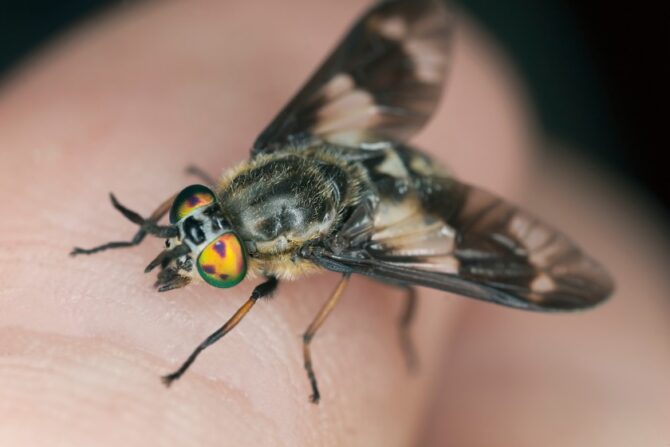
With about 250 species generally called deerflies, there are so many blood-sucking enemies to contend with.
Some may also call members of the genus Chrysops green-headed flies or yellow flies, perhaps because of their light-brown or yellow color.
Deer flies have a global range, breeding wherever they find near-water vegetation or dampness.
Deerflies are similar to horseflies as only their females suck blood, which they primarily locate by detecting Carbon dioxide, smelling, or seeing.
Humans and animals, victims of deerfly bites, suffer from transmitted diseases, including equine infectious anemia, filariasis, anthrax, tularemia, anaplasmosis, and hog cholera.
While deerflies suffer from predation from dragonflies, nest-building wasps and hornets, and some birds, humans find it challenging to control their unwelcome population.
8. Bed Bugs
Scientific Name: Cimex lectularius
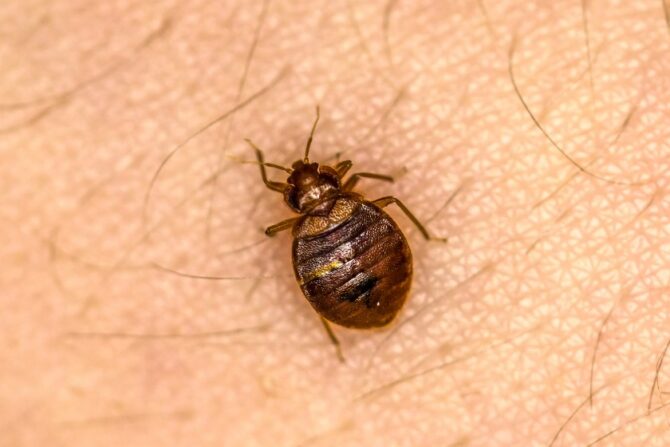
The traditional saying “Good night, sleep tight, don’t let the bed bugs bite” suggests how much people fear bed bugs.
Bed bugs are notorious for ruining nights of quality sleep, feeding on their human hosts while they snooze during their rest hours.
These brownish-red bugs are characterized by their flat, oval shape growing between four and five millimeters in length.
Scientists have yet to link any infectious diseases to beg bugs, but they have heaped more havoc on human hosts than one could imagine.
Bed bug victims often suffer from skin rashes, allergic symptoms, and psychological effects, with their bites causing red spots and even noticeable blisters.
Bed bugs are world citizens who spend considerable time in the dark, including hidden places like wall cracks and mattress seams.
9. Sandflies
Scientific Name: Culicoides spp.
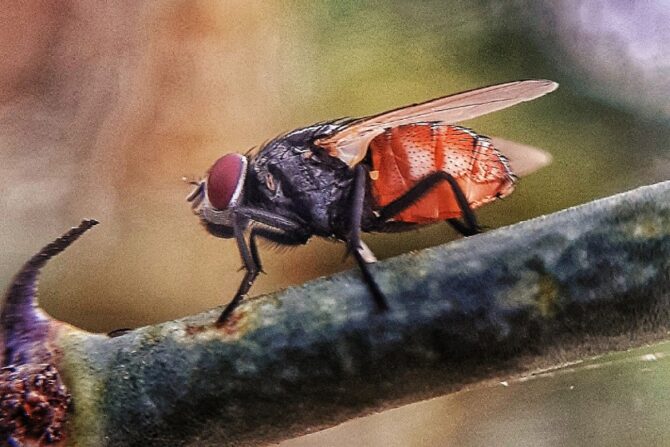
While “sandfly” is a colloquial name, it gives an insight into the habitats of these bugs.
The blood-sucking fly inhabits sandy areas, including salt marshes or other moist areas.
Their size makes it easy for them to enter houses, and their ability to be active at the start and end of the day makes them dreadful.
Moreover, people fear sandfly bites because they result in small, intensely itchy welts or bumps that worsen within a week.
Female sandflies are infamous for being the culprits sucking animal blood to foster egg production.
While not all sandfly species are disease vectors, some are responsible for leishmaniasis and pappataci fever, and others transmit the Chandipura virus (a deadly relative of the rabies virus).
10. Eastern Blood-sucking Conenose (Kissing Bugs)
Scientific Name: Triatoma sanguisuga

Eastern blood-sucking conenose are winged, black or dark brown bugs with six reddish-orange specks along each side of their abdomen.
Unlike most bugs considered earlier, this species is large-sized, roughly twenty-five millimeters.
It is similar to beg bugs, operating at night when its hosts are asleep; however, it is more adventurous, lurking in nests of wild animals.
Eastern blood-sucking conenose are limited to a specific geographical range, occurring in North America, Latin America, and the Southeastern United States.
These bugs transmit the Chagas disease, affecting an estimated six to eight million people, primarily in South America.7
How To Control Insects That Suck Bugs
Are you dealing with or is your animal suffering from bugs that suck blood?
The following tips can help you control or prevent the infestation of these undesirable parasitic visitors.
Preventive personal behavior
Could you make it your aim to stop the bugs from entering, feeding, and breeding in human environments?
Stopping these bugs that drink blood from feeling welcome and comfortable within your home or your animals’ space can help control their presence and population.
Application of insect repellents to the skin
While heavily using or pouring insect repellent all over your body is unnecessary, we suggest spraying or rubbing insect repellents onto skin parts uncovered by your clothes, especially in areas that have favorable conditions for breeding bugs.
Suitable clothing
Body lice and some insects are immune to clothing as they live or can be transmitted between hosts through clothing.
Still, bed bugs, mosquitos, and others attack areas uncovered by clothes.
Therefore, it will help if you wear clothes that prevent you from possible attacks that might lead to deadly health conditions from blood-sucking insects.
The use of appropriate camping gear and bed nets
You may bring bugs to your home after visiting a campsite where insects are common.
As such, you may minimize coming in contact with these insects by using the appropriate camping gear and bed nets.
Some nets kill insects on contact, thanks to insecticides like permethrin.
Others, although more friendly to insects, protect you from harm.
Applying space repellents
While bed nets protect you during your rest hours, space repellents create a bug-free space, helping you stay safe by preventing human-vector contact.
Space repellents are volatilized chemicals that disrupt host-seeking behavior common to bugs that suck blood.
Ground spraying of insecticides
While ground spraying of insecticides is mostly the last resort, as non-parasitic or ecologically important insects will be affected, it is very effective in controlling bugs.
However, one must be conversant with factors that affect spraying, including spray pressure, type of chemical, and application rate. It is best to:
- Have a positive identification of the insect
- Select the pesticide specifically formulated to control the identified insect
- Select the proper equipment
- Apply the pesticide under the right conditions and at the right time.
Frequently Asked Questions
Are blood-sucking bugs ecologically important?
While blood-sucking insects wreak havoc on man and livestock, they have their ecological benefits, contributing substantially to the food chain by serving as food for birds and other animals. They also pollinate plants and engage in biomass transfers.
What mode of transmission is a blood-sucking insect?
Bugs that suck blood transfer parasites and diseases from one animal or human host to another using their biting or piercing and sucking mouthparts. Therefore, they use the mechanical mode of transmission as they are mechanically modified to suck blood.
Do blood-sucking insects drink blood?
While some interest that sucks blood rely exclusively on their hosts’ blood for survival, some, including mosquitoes, horseflies, and deerflies, only use the proteins in the blood to lay their eggs. As such, only the females of these insects require blood in their diet.
Wrap Up
“Blood-sucking bugs are enemies to humans and livestock,” is, to say the least.
Therefore, controlling their populations within our immediate environment and avoiding practices that attract them will help us stay safe from the diseases they transmit.
We encourage all to take note of the species we have considered and their identifying features to ensure we keep them away from ourselves, loved ones, pets, and livestock.
Up Next…
References & Notes
- Zika Virus. CDC.
- Wong, P. S., Li, M. Z., et. al. (2013). Aedes (Stegomyia) albopictus (Skuse): a potential vector of Zika virus in Singapore. PLoS neglected tropical diseases, 7(8), e2348.
- 100 of the World’s Worst Invasive Alien Species. Global Invasive Species Database.
- Baldacchino, F., Muenworn, V., et. al. (2013). Transmission of pathogens by Stomoxys flies (Diptera, Muscidae): a review. Parasite (Paris, France), 20, 26.
- Two thirds of British children will catch head lice during school years, study finds. Institute of Mums.
- Maurice W. Provost. 1952. The Dispersal of Aedes Taeniophynchus. Florida State Board of Health, Jacksonville.
- Chagas Disease. PAHO/WHO.


